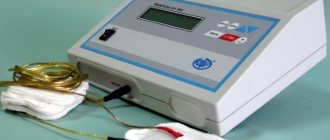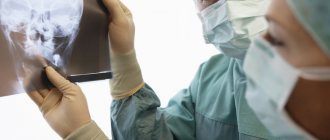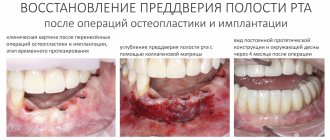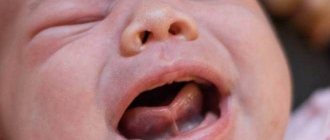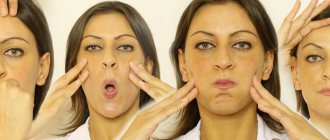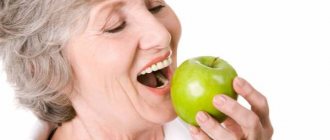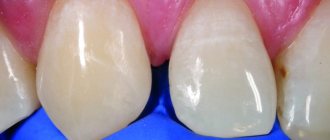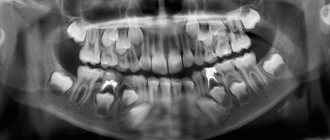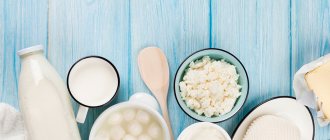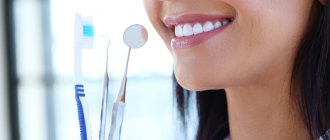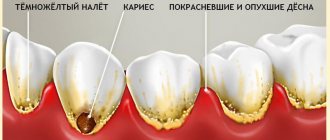Many people dream of a beautiful and snow-white smile, but according to the WHO (World Health Organization), almost every fifth person on Earth suffers from dental diseases. And this despite the fact that people brush their teeth every day and use modern enamel products. At first glance, the situation is paradoxical: it turns out that oral care does not protect us from various dental diseases. This is wrong. Simply by choosing dental products, people forget that the oral cavity also needs care. The most effective prevention of such pathologies today is gum massage. Oral massage should be done constantly, devoting only 2-3 minutes of free time to the procedure. But you can do this yourself, so we will tell you how to massage your gums at home.
Indications and contraindications
Gum massage can be performed for both preventive and therapeutic purposes. In each case, you should consult a dentist who will recommend a technique and means.
- For periodontitis, the gums are massaged only with your fingers, using smooth, slow movements. For comfort, fingers are lubricated with olive oil or toothpaste.
- For periodontal disease, special medical oils and gels are used. Massage with fingers or irrigator.
Contraindications to self-massage are:
– short period from the moment of tooth extraction, partial or complete adentia (absence of teeth);
– braces, dentures;
– inflammation in the oral cavity, purulent or bloody discharge;
– large carious lesions;
– presence of teeth/roots requiring removal.
What are the benefits of massage?
Let's start with the main thing - the benefits of gum massage. By stimulating the soft tissues of the oral cavity, you can guarantee the following results:
- Saturation of cells and tissues with oxygen;
- Improved blood supply;
- Strengthening periodontal tissues;
- Elimination of swelling;
- Disinfection of the oral cavity: provided that self-massage of the gums is performed using various tinctures and means;
- Prevention of carious changes.
At the same time, we should not forget that, like any massage procedure, there are indications and contraindications.
Let's start with recommendations. Massage inside the oral cavity is prescribed by dentists in the following situations:
- Eruption of primary and permanent teeth;
- Wearing removable dental structures;
- Prevention and treatment of dental diseases;
- Correction of malocclusion;
- Gum recession (decrease in volume) with exposure of the necks and roots of the teeth.
At the same time, manual and hydromassage of the gums is contraindicated in the presence of:
- Teeth to be removed;
- Cysts, abscesses, etc.;
- Periodontal pockets: a pathology in which there is detachment of the gum from the tooth.
- Jaw injuries.
Taking these features into account, it is recommended to do hydromassage of the gums only after visiting the dentist.
Techniques
Massage the gums with your fingers (in the evening) or with a soft toothbrush (in the morning).
- Self-massage with fingers is performed with washed hands after hygienic brushing of teeth in the following sequence:
- Using light stroking movements, the pads of the index fingers of both hands move along the gum from the front teeth to the distant wisdom teeth. Repeat on each jaw 5–7 times.
- Rub the gums in a circular motion, moving along the gum from one wisdom tooth to another, gradually increasing the pressure.
- Wrap your fingers around the gum on both sides and squeeze near each tooth for 6–7 seconds, moving from the center to the far teeth.
- Complete the massage with soft strokes.
- There are several techniques for massaging your gums using a soft toothbrush:
- According to Charters. The brush is placed at the base of the teeth, massaging the enamel surface with vibrational movements up and down, capturing the edge of the gum. At the beginning of the procedure, the affected tissues are not affected.
- According to Shtilman. The brush is positioned at an angle of 45° with the bristles down, and carefully moved along the interdental spaces. During massage, not only cleaning occurs, but also increased blood flow.
- According to Bell. The brush is moved, grabbing the edge of the gum, in one direction - from the base of the teeth to the cutting edges. With slow movements, possible suppuration from the mucous membranes comes out.
- According to Fones. With the jaws closed, place the brush on the teeth at an angle of 90°. They make circular spiral movements along both rows of teeth, capturing the edge of the gums. When opening the mouth, repeat on the distal (back) side of the teeth.
- According to Hirschfeld. Pass the bristles from the neck of the teeth to the edge, capturing the edge of the gum. The direction of movement on the teeth of the lower jaw is from bottom to top, on the teeth of the upper jaw – from top to bottom.
Features of massage for periodontal disease and periodontitis
Massage for periodontal disease and periodontitis is carried out after sanitation of the oral cavity, taking into account the following features:
– gentle types of self-massage are performed with a toothbrush (according to Charters, Shtilman);
– finger massaging begins in healthy areas, gradually moving to the sick;
– after the procedure, the mouth is rinsed with a decoction of recommended herbs or a solution of tea tree oil (7-10 drops per glass of water).
To enhance the effect of the massage, applications are made - a medicinal product is applied to a cotton swab and held on the gum for 15 minutes. You can use fir oil, honey with added salt, or a mixture of 1 teaspoon of raw grated honey with the addition of 10 drops of vegetable oil.
Treatment with applications is carried out for 14 days, followed by a break.
Fingering
Massaging the gums with your fingers is suitable for preventing periodontal disease and improving blood supply to the oral mucous membranes .
This procedure has several features: light massaging movements should be parallel to the lymph flow and the course of blood vessels , while the pressure force is adjusted according to sensations.
Two fingers are involved in the process - the thumb and index. You need to start movements from the outer chewing molars, gradually moving to the front incisors .
Important! When working with the upper jaw, the fingers should move from top to bottom, with the lower jaw - vice versa.
Four simple movements alternate:
- Stroking – these movements begin and end the massage. The index finger is placed on the gum on the side of the cheek, and the thumb on the inside. The massage is done rhythmically, without affecting the tissue too much . If there are inflamed areas, the intensity of pressure is reduced.
- Rubbing – helps increase blood flow. Make circular movements, rotating in a spiral in one place and gradually increasing the pressure. The procedure must be done according to the lymph flow, using direct and indirect effects (through the skin of the face).
- Squeezing - squeeze out congestion from areas under the gum with a strong movement of the fingers, performing vertical and rotational actions.
- Squeezing (compression massage) - pinching individual areas of the gum with your fingers. The impact lasts for several seconds, after which the pressure is reduced.
Rules that will help make massage effective and safe
- Visit your dentist to remove plaque and bacterial deposits. Treat all your teeth. Make sure that there are no hidden formations (cyst, abscess) or acute inflammatory processes in the mouth. Get advice on whether massage is contraindicated for you. The doctor will also give advice on which irrigator, paste and rinses are best for you to use.
- In conjunction with different massage techniques, use pastes, gels, and various oils (essential and vegetable).
- Complete the procedure by rinsing your mouth with warm herbal decoctions based on chamomile or sage.
After the procedure, you should rinse your mouth with a decoction of medicinal herbs
. According to some studies, gum massage helps activate points responsible for the health of various internal organs. For example, if you carefully treat the area where the roots of the incisors are located, you can improve the functioning of the kidneys and reproductive system. If you influence the tissues in the fang area, the functioning of the liver improves.
Do you want to restore the functionality of the pancreas and stomach? Apply pressure to the gums in the area of the molars. Massaging the mucous membrane in the figure eight area will tone the heart muscle and vascular system. However, massage techniques should not be considered a panacea. If there are serious problems with internal organs, then the only right solution is to seek professional medical help.
1Balyan L.N. Practical possibilities of using oral hygiene items and products for periodontal diseases // Problems of dentistry. – 2010.
Notice
: Undefined variable: post_id in
/home/c/ch75405/public_html/wp-content/themes/UltraSmile/single-item.php
on line
45 Notice
: Undefined variable: full in
/home/c/ch75405/public_html/wp-content /themes/UltraSmile/single-item.php
on line
46
Rate this article:
( 2 ratings, average: 5.00 out of 5)
prevention
Taking care of the oral cavity: how and why to massage the gums?
Every person knows how important it is to brush your teeth daily.
But not all people know that in addition to the standard oral hygiene procedure, it is necessary to massage the gums, which is no less important than brushing your teeth.
Its influence on human health has been studied for many centuries, and it has been found that it has many beneficial effects: improves health, gives strength and elasticity to muscles, prolongs youth, increases vitality, gives vigor and gives good health.
The effectiveness of massage has been scientifically proven and tested over many years of practice, and it itself is a physiological healing method.
Hydromassage
Gum hydromassage is very beneficial for gum health. It helps improve blood supply to the periodontium and is an excellent prevention of inflammatory gum diseases.
Hydromassage of the gums is carried out using the AQUAJET device. The powerful water pressure created by the device gently massages not only the gums, but also the entire oral cavity, removing food debris from hard-to-reach places where it is impossible to reach with a toothbrush or dental floss. The ability to regulate the water pressure allows you to use the gum hydromassage not only for adults, but also for children. The device can also be used to clean dentures very effectively.
Benefits and harms of procedures
Massage of the gums with fingers, a brush and other devices is carried out in order to improve blood circulation in the mucous membrane, strengthen it, and increase local immunity. If you do the procedure regularly and correctly, it promotes rapid regeneration of cells and tissues and helps get rid of swelling.
When the gums are strengthened, this has a positive effect on the condition of the teeth, because then they sit tightly in their sockets, eliminating the possibility of them becoming loose and falling out due to inflammatory processes in the periodontal tissues.
For patients who have just started wearing braces and dentures, the procedures are useful because they help reduce the level of discomfort, ease and speed up the period of adaptation. In addition, some gum massage techniques are used specifically to straighten teeth and can reduce the time of orthodontic treatment.
Some types of massage (for example, finger massage) are recommended for young children to speed up teething and eliminate the unpleasant symptoms accompanying this process (itching, pain, swelling, redness). Children are also indicated for procedures to prevent periodontal diseases and the development of dental anomalies.
Massage is recommended for infants during teething
There are also techniques that doctors recommend practicing after tooth extraction and implant installation. Naturally, not during the most critical period of rehabilitation (the first 2 weeks), but after the tissues have healed a little. The procedures accelerate regeneration processes, help prevent postoperative complications, and enhance the absorption of certain medications and ointments.
Massage is very dangerous to perform if there are contraindications mentioned above. In this case, it can further aggravate the situation, contribute to the spread of infectious processes to surrounding areas and tissues, and stimulate the rapid growth of cysts and granulomas.
Now let’s look at the basic massage techniques that are used today.
During teething in babies
To relieve teething pain in babies, there are various gels, syrups and drops that contain lidocaine. However, gum massage can no less effectively alleviate the child’s condition during this difficult period for him .
The procedure is carried out with the index finger or little finger , without treating your hands with alcohol. It is enough to wash them thoroughly with cool water, paying special attention to the area under the nails. Nails should be cut short to avoid damaging the gums; you can also use a silicone fingertip with soft bristles or a cotton swab moistened with boiled water .
The area where the roots of the teeth are located is lightly rubbed and stroked with circular movements on both sides - internal and external. Monitor your child's reaction and take short breaks so that he can adapt to unusual sensations .
Massage can be done an unlimited number of times, it is not contraindicated and has no side effects.
You only need to massage the area above the gums . Impact on the site of teething can worsen the baby’s well-being.
Types of gum massage
4 techniques for how to massage your gums at home or in a specialist’s office:
- vacuum massage;
- toothbrush for periodontal disease;
- using a special device - an irrigator;
- massaging with fingers.
Vacuum
The procedure is performed by a specialist using a device with vacuum tubes. The device creates negative pressure on the gums, resulting in small hematomas. As the hematomas heal, the condition of the mucous membrane improves, pathological processes stop, and the blood supply to the gum tissue increases.
For adults, at the first session a maximum of 6–7 hematomas are created, each taking 15–20 seconds to form. The procedure is painful. Pain relief is possible with a local anesthetic to reduce discomfort.
Hydromassage gums
Massaging the gums with an irrigator is also called hydromassage. The kit includes nozzles with water and air regulation. When you turn on the device, bubbles appear, cleaning the interdental spaces, enamel and other hard-to-reach places. Additionally, they massage painful, inflamed and bleeding areas.
Four techniques are used to massage the gums: Fones, Charters, Bell and Shtilman.
Hydromassage prevents the occurrence of dental diseases. Recommended when wearing braces.
How to massage your gums with your fingers - massage technique
The manipulation is done with the thumb and forefinger. It comes in two types: direct - along the mucous membrane, indirect - from the outside of the cheek.
4 movements are performed:
- stroking the non-inflamed area first, slowly moving to areas of swelling, stagnation and bleeding;
- rubbing in a spiral at one point in a spiral, gradually increasing the radius to the right or left side of the jaw;
- squeezing – combines rotation and pressure on one point;
- pinching individual areas between fingers.
Gum massage always begins with stroking and ends with it.
Gum massagers
Gum massagers in pharmacies are available in two types:
- for vacuum technology;
- irrigators.
The first are special devices with nozzles and small hoses that create pressure. When used during a session, 5–7 microscopic hematomas are created. As they recover, metabolic processes and active healing of the mucous membrane are stimulated.
An oral irrigator is an electric device with attachments that creates pressure of water and air. Works from a power outlet, there are portable or travel models. Used for thorough hygiene and massage.
To combat pain and bleeding, and improve periodontal health, gum massage is used. It is important to follow the technique. It is permissible to use herbal decoctions and medications for better effect and faster elimination of ailments.
The importance of massage before prosthetics
Massage of the gums after tooth extraction before prosthetics is very important. Performing this procedure will help strengthen your gums and prepare them for dentures. The condition of the gums is very important for this operation. If at the time of treatment the patient has any problems with the gums, prosthetics are postponed for the recovery period.
For example, if there are partially destroyed teeth, it is recommended to remove them. Diseased teeth that can be cured are treated.
A denture cannot be installed if the gums are affected by periodontal disease. Changes in the condition of the gums can render dentures useless. That is why the patient will be referred for gum treatment. A smart solution would be to use massage to restore the elasticity of gums with periodontal disease.
Important: in case of periodontal disease, massage will be very desirable, even if the person does not plan to install dentures.
Comments
Will gum massage help straighten teeth? Will this eliminate the need to wear braces? I only have 1 crooked tooth!
Anna (08/11/2020 at 08:12 pm) Reply to comment
- Dear Anna! Massage alone will not help correct crooked teeth. It is prescribed in addition to myogymnastics and other methods of bite correction. But if the patient has only one crooked tooth, then wearing braces, as a rule, is not required. The problem can be solved with removable orthodontic devices (plates, trainers), or artistic correction, prosthetics with veneers and crowns.
Editorial staff of the portal UltraSmile.ru (08/13/2020 at 09:07) Reply to comment
Is it worth giving a massage when a child’s tooth has erupted? If he scratches it actively, will massage help ease teething? Will massage speed up the appearance of new teeth? Are there any contraindications for massaging a baby’s gums?
Elena (09.23.2020 at 08:21) Reply to comment
I have fairly loose gums. I read the article and decided to try massage using the Charter method. I had never observed bleeding gums before, but now blood appeared. Tell me, should I wait and continue, perhaps this is just an adaptation of the gums, or does this already indicate the beginning of problems?
Olga (09.23.2020 at 09:23) Reply to comment
What motivates the opinion of the author of the article that gum massage helps activate points responsible for the health of various internal organs? I’m hearing this for the first time and even Wikipedia doesn’t give a clear answer!
Julia (09.23.2020 at 09:25) Reply to comment
We started massaging the baby when teething, sometimes with our fingers, and sometimes with a special massage brush. Once again, blood began to flow around the tooth (it was just emerging). Does this mean that there is no need to do massage anymore? How then can teething be made easier?
Marina (09/23/2020 at 11:28 am) Reply to comment
My gums constantly bleed when brushing my teeth, no matter what level of hardness the toothbrush is, I use toothpaste many times, nothing helps. Will massage help? Does it help reduce bleeding?
Marina (11/20/2020 at 7:00 pm) Reply to comment
Hello! I am wondering whether it is necessary to consult a dentist before starting the procedure, or can I choose the method myself and change techniques? Can making decisions on my own be very harmful to my health?
Ira (11/20/2020 at 7:16 pm) Reply to comment
I only knew the first one, the dentist once showed it to me. Is it worth doing such a massage if I have a wisdom tooth coming out, naturally there is swelling and pain, or is it better to just use some kind of ointment?
Lera (11/20/2020 at 7:27 pm) Reply to comment
Small children can still do this. I don't know about adults. If only everything was sterile. You need to do this with clean hands so as not to introduce an infection and create even more problems than they already are.
Vlad (11/20/2020 at 08:25 pm) Reply to comment
If you need to do a massage, it is better to consult a doctor. He will tell you and show you how best to do this and to avoid further problems if something happens or if the massage is incorrect.
Pavel (11/20/2020 at 9:12 pm) Reply to comment
